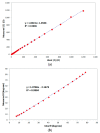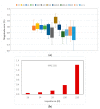Wearable and Noninvasive Device for Integral Congestive Heart Failure Management in the IoMT Paradigm
- PMID: 37631594
- PMCID: PMC10457917
- DOI: 10.3390/s23167055
Wearable and Noninvasive Device for Integral Congestive Heart Failure Management in the IoMT Paradigm
Abstract
Noninvasive remote monitoring of hemodynamic variables is essential in optimizing treatment opportunities and predicting rehospitalization in patients with congestive heart failure. The objective of this study is to develop a wearable bioimpedance-based device, which can provide continuous measurement of cardiac output and stroke volume, as well as other physiological parameters for a greater prognosis and prevention of congestive heart failure. The bioimpedance system, which is based on a robust and cost-effective measuring principle, was implemented in a CMOS application specific integrated circuit, and operates as the analog front-end of the device, which has been provided with a radio-frequency section for wireless communication. The operating parameters of the proposed wearable device are remotely configured through a graphical user interface to measure the magnitude and the phase of complex impedances over a bandwidth of 1 kHz to 1 MHz. As a result of this study, a cardiac activity monitor was implemented, and its accuracy was evaluated in 33 patients with different heart diseases, ages, and genders. The proposed device was compared with a well-established technique such as Doppler echocardiography, and the results showed that the two instruments are clinically equivalent.
Keywords: CMOS integrated circuits; bioimpedance; cardiac output assessment; congestive heart failure.
Conflict of interest statement
The authors declare no conflict of interest.
Figures













References
-
- Dhaou I.B., Ebrahimi M., Ammar M.B., Bouattour G., Kanoun O. Edge devices for internet of medical things: Technologies, techniques, and implementation. Electronics. 2021;10:2104. doi: 10.3390/electronics10172104. - DOI
-
- Nasr M., Islam M.M., Shehata S., Karray F., Quintana Y. Smart healthcare in the age of AI: Recent advances, challenges, and future prospects. IEEE Access. 2021;9:145248–145270. doi: 10.1109/ACCESS.2021.3118960. - DOI
-
- Fouad H., Hassanein A.S., Soliman A.M., Al-Feel H. Analyzing patient health information based on IoT sensor with AI for improving patient assistance in the future direction. Measurement. 2020;159:107757:1–107757:11. doi: 10.1016/j.measurement.2020.107757. - DOI
-
- An EU Action Plan for Better Cardiovascular Health. [(accessed on 7 November 2022)]. Available online: https://www.medtecheurope.org/resource-library/an-eu-action-plan-for-bet....
MeSH terms
Grants and funding
LinkOut - more resources
Full Text Sources
Medical
Research Materials

